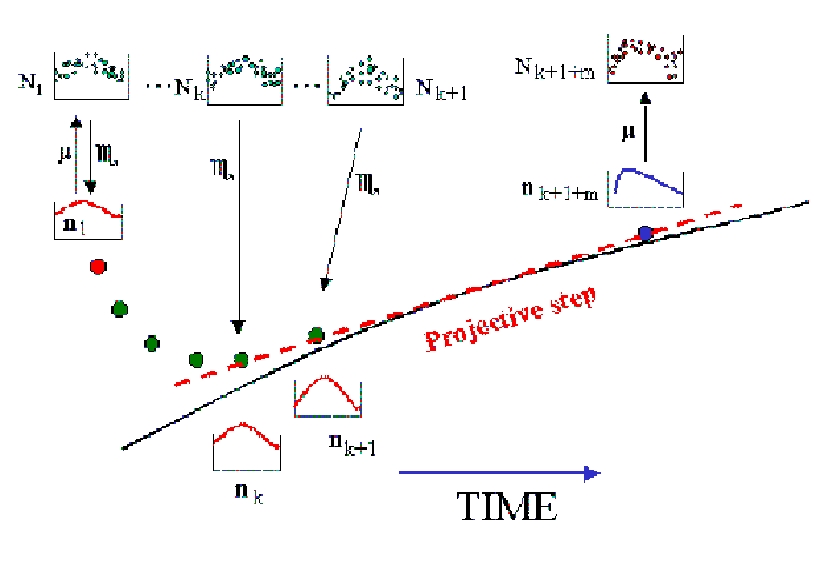Cartoon of projective integration concept.
Projective Integration on the Slow
Manifold | |
We illustrate the ``equation-free'' and projective
integration approaches with the schematic in the figure above. We
start with data from a coarse representation n1 of
the system. In the case of plasma physics this might correspond to
data from a MHD representation of the plasma. This data is then
``lifted'' to a ``fine'' or kinetic representation
N1 whose moments correspond to the coarse
representation. The kinetic representation could be a full particle
model that could be evolved with the p3d code or a gyrokinetic
representation that could be evolved with GS2. The kinetic model
is now evolved k time steps forward with the fine scale
integrator. These k time steps allow the kinetic system to relax to
the ``slow manifold'' that governs the long time evolution of the
system. This relaxation procedure is required because the initial
state will not generally be in a equilibrium in the kinetic sense.
After k time steps, the data from the kinetic model
Nk is now ``restricted'' onto the coarse
representation nk. In the mean time the kinetic
model is further stepped by one or more time steps and this data is
then ``restricted'' onto a second coarse representation
nk+1. The coarse representations
nk and nk+1 provide the basis for
projecting forward the coarse representation with a large
``projective'' time step along the ``slow manifold'' to
nk+1+m. The process then repeats. It is important to
note that the projection forward of the coarse representation did not
require any knowledge of an equation governing the dynamics of the
coarse representation -- hence the name ``equation-free'' denoting
this technique. Further refinements of this approach include producing
an ensemble of fine scale representations. This leads to more rapid
convergence to the ``slow manifold'' than simply extending the time
integration of the fine representation.
|
|

